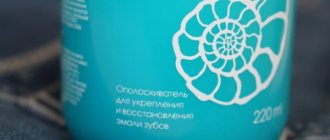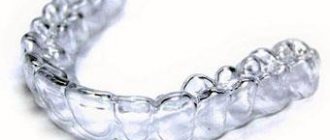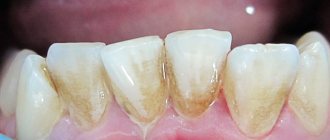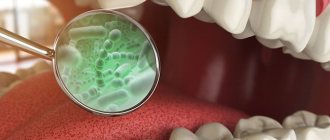How honey affects your oral health
Both tooth erosion and caries occur as a result of demineralization of the hard tissues of the tooth. But these conditions have different etiologies. Erosion is the result of a chemical process without the participation of bacteria, while the metabolic products of bacteria cause caries (tooth decay).
Previously, fluoride dentifrices and solutions, antibacterial mouth rinses, and antibiotics were primarily used to treat gingivitis and enamel demineralization. Recently, in Western practice, much attention has been paid to natural products that promote health.
Historically, honey has been used as an environmentally friendly medicine for many years in the treatment of burns, infected wounds, peptic ulcers, bacterial gastroenteritis and eye infections. In addition, honey has powerful broad-spectrum antibacterial activity.
Scientists have conducted numerous studies to determine whether honey causes erosion, and whether the composition of saliva changes under the influence of honey components, especially propolis, which is known to have a protective effect against dental erosion and the adhesion of early bacterial colonizers.
The effect of honey on pH
Significant differences in pH were observed in the honey and sucrose groups compared to the pH observed in the sorbitol group (p ≤ 0.001). The maximum drop in pH was observed after 5 minutes in both the honey and sucrose groups; however, the pH in the honey group recovered quickly within 10–20 minutes of exposure and did not fall below the critical decalcification pH of 5.5. On the other hand, pH after sucrose exposure fell <5.5 and was associated with a 30-minute recovery time. The pH observed for the sorbitol group did not change over time. Bacterial counts were significantly reduced in the honey group compared to the other treatment groups (p ⩽ 0.001), and honey significantly inhibited the growth of all strains tested compared with the inhibition observed with antibiotics (p ⩽ 0.001).
Results of studies on the antimicrobial properties of honey
In vitro studies have shown that exposure to a honey solution affects the activity of monocytes. Mouthwash containing propolis (present in bee products) has been found to have antimicrobial activity against Streptococcus mutans and can be used as an alternative treatment in preventing dental caries and reducing plaque accumulation and polysaccharide formation.
It was recently reported that periodontal pockets irrigated with a 10% propolis solution showed a 95% reduction in gingivitis. This suggests (based on both clinical and microbiological parameters) that subgingival irrigation with propolis extract as an adjunct to periodontal treatment is highly effective.
Topical application of propolis extract to oral Candida albicans infections resulted in remission within three weeks, and treatment efficacy was comparable to treatment with nystatin, the standard antifungal drug used to treat these infections.
Another study conducted on premolars for direct pulp capping also found that propolis was as effective as calcium hydroxide. Based on these observations, it was concluded that propolis could be used in conjunction with calcium hydroxide as an intracanal treatment.
A study conducted on bacterial isolates obtained from patients found that honey was a more effective antibacterial agent than some of the common antibiotics tested. This also suggests that honey may inhibit plaque formation and help fight gingivitis.
The benefits of honey
The composition of the bee product is rich in useful components. The vast majority of them are calcium. It is this component that is responsible for the strength of bones.
The phosphorus contained is suitable for whitening, and fluoride is the main protective agent against the destruction of hard dental tissues.
This product is also not deprived of useful vitamins:
- vitamin A. It is necessary for smooth tooth enamel and also helps eliminate bleeding gums.
- vitamin D. It helps absorb calcium and phosphorus.
- vitamin C. It is necessary for bone regeneration.
Benefits of comb honey for teeth
Honey is especially beneficial when consumed in honeycombs. Honeycomb is a natural honey package that includes a wide range of vitamins and natural antibiotics. When consuming honey along with honeycombs, wax and propolis also enter your body - the most valuable beekeeping products, which, among other things, have a beneficial effect on teeth. With regular chewing of honeycombs, the wax cleans not only the teeth, but also the tongue and gums. For gum diseases, comb honey is extremely useful, since the wax gently massages the gums, and honey has a healing effect on small wounds and cracks that cannot be seen with the naked eye, but which will nevertheless bother you. Honey also has disinfectant properties necessary for such diseases. Thanks to wax, blood circulation in the gums improves, due to which the tissues that hold the teeth become stronger, and, consequently, the teeth become stronger.
As for the propolis contained in comb honey, back in 1953 it began to be used in dental practice to anesthetize the hard tissues of teeth and soft tissues of the oral cavity. Propolis is an excellent remedy for local anesthesia. P.I. Prokopovich noted that in terms of its anesthetic properties, this product is 52 times superior to novocaine and 3.5 times superior to cocaine. Therefore, if you have a toothache, just chew honeycomb honey for a while, trying to keep it in your mouth longer, and the pain will begin to subside.
How to protect your teeth?
To protect your mouth from dental diseases, you need to consume honey correctly. We bring to your attention a few rules:
- You should brush your teeth several times a day - morning and evening.
- After each meal, it is advisable to rinse your mouth with warm water.
- Throughout the day, you need to drink enough water so that saliva constantly washes the surface of the enamel.
- Your toothbrush needs to be changed every 3 months, otherwise bacteria will accumulate on the bristles.
Natural honey for healthy gums and oral cavity (health recipe with honey)
A huge percentage of adults around the world suffer from various gum diseases. Inflammation of the gums is caused primarily by the proliferation of bacteria in the oral cavity. If the mouth is not cleaned in time, problems arise, including with the gums. For this reason, oral hygiene is especially important. In this article we will talk about how natural honey helps in promoting gum and oral health.
Of course, there are many factors that contribute to the occurrence of dental diseases. These include genetics, hormonal changes, poor nutrition, decreased immunity, bad habits, as well as the use of certain medications.
Mild gum disease includes gingivitis. This disease is characterized by increased sensitivity of the gums, swelling and bleeding. Bad breath gets worse. If you have gingivitis, you need extra careful daily oral care.
If you have a more advanced stage of gum disease, your gums are not close enough to the necks of your teeth, they hurt and bleed - then most likely it is periodontal disease. This form of gum disease requires special professional treatment and may even require surgery.
But is there anything else you can do to combat or reverse gum disease? Yes, there are several things you can do to achieve a healthy mouth.
Here are some simple tips to help you avoid or reduce the risk of gum disease: 1. Avoid bad habits, especially tobacco use 2. Drink plenty of water to keep your mouth hydrated 3. Visit your dentist regularly 4. Make the most of it products for oral hygiene. Be sure to brush your tongue with a toothbrush twice a day.
Honey for oral health
There is also a very simple, but extremely effective remedy for maintaining the health of your teeth and gums. This is honey. Thanks to its antiseptic properties, honey effectively cleanses and fights bacteria in the oral cavity. However, it is important to use only high-quality natural bee honey to prevent any diseases. Counterfeit sugar will only worsen problems with teeth and gums (you can buy natural honey in our store).
When it comes to natural honey, dentists claim truly miraculous results from using honey in the fight against bacteria and oral infections. Honey not only disinfects inflammation and destroys germs, it also saturates the body with many useful enzymes. Chestnut honey has the most pronounced bactericidal properties. But honey of other varieties will undoubtedly be effective.
How to use honey to prevent dental diseases? Very simple. Every time, morning and evening, after you brush your teeth and mouth with a toothbrush and toothpaste, take a drop of honey on your fingertip and slowly massage your gums for 3 minutes. This operation can be done using a soft toothbrush. Leave a small jar of honey in the bathroom and do this procedure regularly. The results will pleasantly surprise you very soon. In just 2-3 weeks you will feel your gums getting stronger.
Another excellent preventive remedy is a solution with honey for rinsing your mouth. Dilute half a teaspoon of honey in a glass of cool water and regularly rinse your mouth with this solution.
Using these simple recipes for healthy teeth, you can visit the dentist's office much less often. Be healthy and smile more often!
« back to list of articles
User comments
Add a comment
Entrance
Introduce yourself
Login via social media profile
An authorization confirmation window will open, after which you will be automatically returned to the site.
Similar articles
Mask with honey, avocado and carrots - perfect skin (beauty recipe with honey)
It's no secret that beauty is, first of all, healthy, smooth skin!
Today “Mountain of Honey” will share with you another recipe with honey - a mask that can work wonders. This mask evens out skin tone. Restores natural collagen, thereby smoothing out fine wrinkles and preventing the appearance of new ones. It also removes age spots and makes the skin perfect. ...read more Water and honey.
Benefits, recipe, method of use, contraindications. There is a simple, effective and very inexpensive way to improve the health of the body, and therefore prolong youth and preserve beauty.
Which? Water and honey! What are the benefits of a glass of clean drinking water mixed with honey? ...read in full About the beneficial properties of ginger with honey (recipe for beauty and health with honey)
Intensively charging the immune system or preparing for the cold.
Infographics on the theme of ginger and a recipe for a healthy cocktail from Mountain of Honey. Autumn is the time of sniffling noses, unexpected colds and untimely illnesses. And there is still a long Russian winter ahead... Here it is worth seriously thinking about strengthening the immune system, and a plant such as ginger with honey can be an excellent assistant for the implementation of this difficult task. ...read in full Honey balm for removing eye makeup (recipe for beauty and health with honey)
An original recipe for beauty and health with honey.
A makeup remover balm that tones and gently cleanses your skin. Honey is an excellent ingredient for cosmetics. It is rich in vitamin A, which is also called the “beauty vitamin.” Vitamin A – promotes cell regeneration, which prevents skin aging and also smoothes out fine wrinkles. Honey retains moisture and the skin around the eyes becomes radiant. ...read more Natural honey for healthy gums and oral cavity (health recipe with honey)
A huge percentage of adults around the world suffer from various gum diseases. Inflammation of the gums is caused primarily by the proliferation of bacteria in the oral cavity. If the mouth is not cleaned in time, problems arise, including with the gums. For this reason, oral hygiene is especially important. In this article we will talk about how natural honey helps in promoting gum and oral health. …Read completely
Rules for using honey for teeth
The benefits of honey for dental treatment have been proven by scientific medicine. To get the maximum benefit from the product, you must follow a number of simple rules:
- Do not allow honey to become too hot;
- It is not recommended to keep the honey product in direct sunlight.
- For storage it is best to use a dry and dark place. The ideal storage temperature is 5 to 10 degrees above zero.
- The dishes should be either wooden or glass.
- You should also avoid contact with metal.
For toothache
If a person has a severe toothache, then you can take honey and cinnamon in equal proportions, grind the mixture and apply it to the sore spot.
For fungal infections of the oral cavity, it is necessary to prepare a special “honey solution”; to prepare it, you need to take 100 grams of honey and 50 ml of water and put it on fire, and you must not forget to collect the foam. You should also add 50 grams of rose petals there. They should first be soaked in sugar water, boiled for another hour over low heat, removed and strained. This remedy helps with stomatitis, just store it in the refrigerator. In addition, this solution will also help with sore throat.
Medicinal chamomile has an antiseptic, antispasmodic, and anti-inflammatory effect. To prepare the solution you need to take 3 tbsp. l. chamomile flowers and 0.5 liters of boiling water. Pour water over the flowers and place in a water bath for 15 minutes. Afterwards you need to strain, cool and add a few tbsp. l. honey.
From caries
Honey is very effective against tooth decay. Of course, it will not be possible to completely cure it with nectar alone. However, partial removal of tartar is guaranteed.
To achieve the desired result, you simply need to chew the honey in the combs or the honeycomb, which contains particles of other bee products.
The special composition of wax, as well as propolis, when taken regularly, noticeably cleans teeth of plaque. As a result, sensitivity in the gums goes away, and the likelihood of caries decreases.
Periodontal disease
To prevent caries, improve the condition of teeth and treat periodontal disease, you can use honey, because... it contains a large number of microelements that are very important for our teeth. Let's look at recipes to combat periodontal disease. To prepare you need to take:
- 2 tsp. chopped salt;
- 2 tbsp. l. honey.
The prepared mixture must be rubbed into the gums twice a day. The duration of the procedure should be no more than 7 minutes. After the procedure, you should rinse your mouth with lightly salted water.
This is another option for preparing a honey-based mixture for periodontal disease. To prepare you need:
- 4 grams of cinnamon powder;
- 8 grams of rose petals;
- 8 grams of clove powder;
- 0.05 g nutmeg;
- 1 tsp. honey;
- 300 sage powder.
All components should be mixed and the contents should be applied to the affected area for 20 minutes. The procedure should be completed by rinsing your mouth with lightly salted water.
This recipe is based on propolis tincture (4%), which is applied to the surface of the tooth root. Lubrication can also be combined with internal administration of 35 drops of 10% alcoholic propolis extract.
When the gums are filled with pus, in other words - the appearance of gumboil, or to get rid of plaque on the teeth, you need to chew honey well in the honeycomb, it contains a large amount of vitamins and does not have a negative effect on the teeth.
Natural sugar substitute
Honey is beneficial for the entire body as a whole, as it has nutritional, bactericidal, preservative, analgesic, anti-inflammatory and expectorant properties. Honey is easily absorbed by the body and can prevent many diseases. But not many people know that, despite the fact that this bee product is very sweet, it does not spoil the teeth, but rather has a positive effect on the gums, teeth and oral mucosa. The main thing is not to overdo it with your daily honey consumption.
Doctors even recommend replacing sugar with honey, since sugar not only destroys teeth, removing calcium from the body and promoting the development of caries, but also leads to the proliferation of bacteria harmful to the oral cavity. The fluoride contained in honey helps to avoid these negative consequences, strengthen teeth, prevent caries and disinfect the oral cavity. According to experts, bacteria have virtually no chance to settle on the teeth and begin to destroy them.
However, when replacing sugar with honey in tea, for example, it is worth paying attention to the fact that when heated to temperatures above 40°C, it loses its beneficial properties. It is better to pour hot tea into a cup, wait 5-7 minutes and only then add natural sweetness to it. Honey goes best with herbal tea.
Stomatitis
Aloe in combination with honey gives very good results in the treatment of stomatitis. You can prepare an ointment at home.
To do this, you need to cut off a few aloe leaves, wrap them in a bandage or gauze, and put them on the bottom shelf in the refrigerator for a day. After a day, you need to squeeze the juice out of the plant. Add honey to it in a ratio of 1 to 2 and mix everything thoroughly. The product is ready for use.
The mixture should be applied to a cotton pad, which should be used to carefully treat dental ulcers. If the mixture is made for a child, then it is necessary to explain to him that he should not lick the wounds for 2-3 minutes. You can also make lotions. If the child can already rinse his mouth on his own, then prepare a solution: 2 tsp. dilute the mixture with 200 ml of warm water. The mixture must be used up to 5 times a day.
What foods stain teeth?
- Coffee
. Lovers of this drink most often have a yellow or brownish coating on their teeth. This is due to the cocoa butter, heavy carbohydrates and sugars contained in coffee. Instant coffee has a greater effect on dental health than ground coffee.
enamel. You can reduce the effect of coffee on your teeth by diluting it with milk or water. It is also best to limit your coffee intake to one cup per day. - Tea
. Contains tannins and, like coffee, stains teeth a yellowish-brown tint. Tea in bags is most harmful to teeth: due to the artificial components contained in it, which happens very often, it stains teeth more than leaf tea. The type of tea - green or black - does not matter. - Wine
. White wine contains acids that negatively affect tooth enamel, causing microcracks to appear through which coloring substances penetrate deeper. Red wine contains tannins and a burgundy-red tint, which also contributes to tooth staining. - Carbonated drinks
. Not only do they change the color of your teeth, but they can also leach calcium from your teeth. In addition to a huge amount of sugar, they contain malic, citric and other acids that literally “corrode” the enamel. You should especially beware of colored soda - it not only corrodes the enamel, but can also stain the tongue and teeth in poisonous colors. If you decide to drink Coca-Cola, do it through a straw, this will reduce the harmful effects on your teeth. - Juices
. Bright and dark juices, such as pomegranate, cranberry, grapefruit, etc., due to their bright color, can also cause yellowing of teeth. It is healthier to simply eat fruit or drink juice diluted with water. - Vegetables and fruits
. Berries that are rich and dark in color, such as blueberries, blackberries, blueberries, cherries, and cranberries, can cause staining and yellowing of teeth. Among vegetables, beets are a strong dye due to the high content of chromogens in them. To prevent dark plaque from forming on your teeth, it is recommended to brush your teeth immediately after eating beets. - Sauces and seasonings
. Many seasonings that have a yellow or brown tint are also on the list of foods that stain teeth. Due to their bright color and high acid content, tomato-based sauces are harmful to teeth. Also, do not overuse soy sauce. - Chocolate and ice cream
. Chocolate and caramel from their color also lead to darkening of the enamel. As for ice cream, sweet and fruit desserts, they contain artificial food colors and chemical components that lead to microtrauma and staining of teeth.
To avoid staining and maintain the natural color and health of your teeth, we recommend visiting a dentist once every 6 months for professional oral hygiene.
You can make an appointment by phone. 8(863)2098902.
special instructions
To determine whether stomatitis can be treated with honey or not, it is first necessary to conduct a classic allergy test. To do this, apply a small amount of nectar to your hand. The optimal place is the inside of the elbow. If after half an hour no discomfort appears, then recipes with honey can be used.
When pure honey is applied to wounds, unpleasant sensations may appear, such as mild pain, burning or even itching. If you cannot tolerate this condition, then you should rinse your mouth with an antiseptic or a pure chamomile decoction. If the pain is unbearable, then these procedures should be abandoned.









